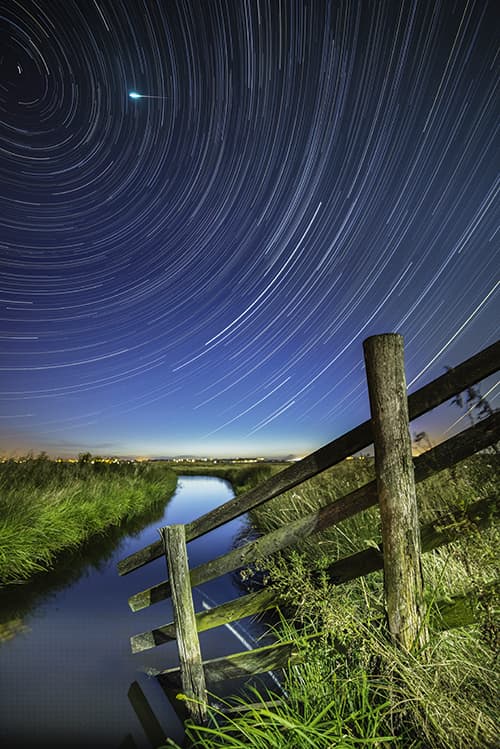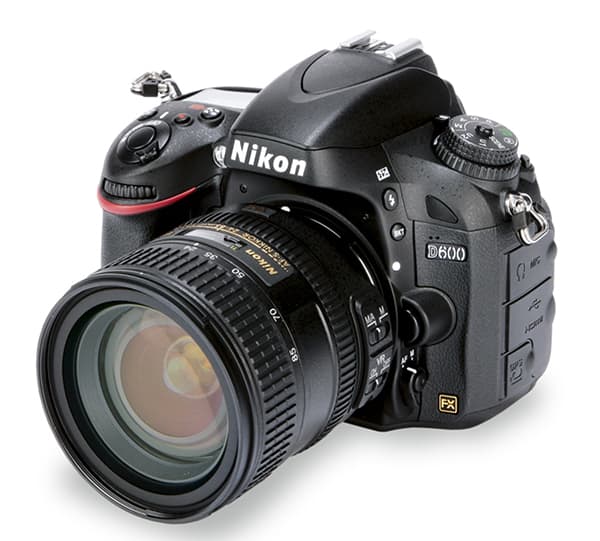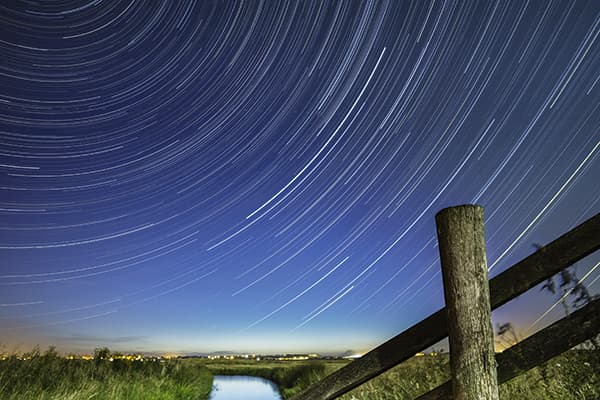
Living in the south-east of England doesn’t offer the best conditions for night photography, but with the prospect of the supermoon (technical name perigee-syzygy) and the Perseid meteor shower (debris from the Swift-Tuttle comet) appearing from 10-13 August 2014, I was inspired to give it a try and dedicate those days attempting to capture something special – or at least something!
Prior to shooting this image, my experience of photographing the night sky in north Kent was quite limited, with results exhibiting a strong orange glow from nearby houses, street lights and aircraft light trails. My only successes were during a visit to Lapland, Finland, where they are blessed with next to no light pollution, and there is always the strong possibility of aurora photography for close on eight months of the year.
With talk of the supermoon and meteor shower filling the news, I considered my options as to where I should set up the camera. For the past 25 years my lifelong project has been the North Kent Marshes, and although I have captured much of what this precious landscape has to offer, my coverage of it at night was seriously lacking. It wouldn’t be enough simply to point the camera skywards – I wanted the resulting image to have a sense of place while, at the same time, showing minimal light pollution. I needed something in keeping with this region, a feature that would make the image’s location recognisable, and in my mind there is nothing more so than the endless cattle fences that criss-cross this expansive landscape.
With the meteor shower’s approximate location plotted, I spread out an Ordnance Survey map and looked for an area where I could be as far away from household and industrial lights as I could. I am very fortunate in that I have access to substantial areas of private land, and with landowners notified of my intentions I set off and drove to various locations looking for just the right composition.
The moon was due to rise late at night. Normally, this would be your enemy in astrophotography as it brightens the night sky, but I used it to my advantage by looking for a location where the moon would illuminate the landscape. With the ‘shower’ occurring in the north-east part of the sky, it was imperative to point the camera in that direction, which also had the added benefit of the stars seemingly rotating around the North Star, an effect created by the earth’s rotation.
Arriving around sunset, I composed the scene, activated the camera’s interval timer and returned to my car 50 metres away, where I would spend the night. Unfortunately, the shoot was thwarted by intermittent cloud (even though the forecast was for a clear sky), which I hadn’t noticed as I drifted in and out of sleep. With the following night’s forecast once again for clear skies, I was given a final chance to try to capture a meteor and star trails, so I headed back to my original spot. However, as I arrived I noticed cattle were moving ever closer to where I was hoping to set up, so I thought better of it and looked for somewhere else to set up. As I walked through the long grass, frantically searching for an alternative composition, I witnessed just the scene I had been seeking, which was better than the previous night’s spot, too!
By 9pm the camera was in position (set to shoot raw files, as JPEG would mean image degradation), but this was far too early to trigger the camera. On the three forecasts that I checked online, each had stated that there would be clear skies from between midnight and 1am onwards, and with that in mind I set the interval timer on my Nikon D600 to shoot continuously from 1am until either the cards (one in each slot) were filled or the battery power was exhausted, which was unlikely given that I had a battery grip attached giving an additional battery’s worth of power.
The ‘shower’ was going to be at its strongest from 1am. This in itself was advantageous since many home, industrial and street lights would have been switched off and air travel would be at its minimum. With the camera in position, composition, focus and settings checked, there was nothing else I could do except go home, collect the camera the following morning and hope for the best.
How Robert shot his image

During my test shoot, there was a full moon and I took a photograph at 30secs at f/2.8, ISO 100, using a 14mm lens, but found it a little underexposed, so I increased it to ISO 200. Taking the 30sec exposure into account and the time for each image to write onto the memory card, I set the interval between shots to 35secs, giving me a 5sec interval time. In total, I used 300 frames between 1am and 4am. The raw files were processed in Lightroom, exported as TIFF files and assembled using a star-trails application. I then imported the file back into Lightroom to do some final tweaking. If you are wondering why I took so many individual images as opposed to just putting the camera on bulb setting and leaving the shutter open, there are two reasons. The full moon meant anything longer than 2mins would have caused overexposure and, by shooting multiple frames, I could produce a time-lapse sequence.







